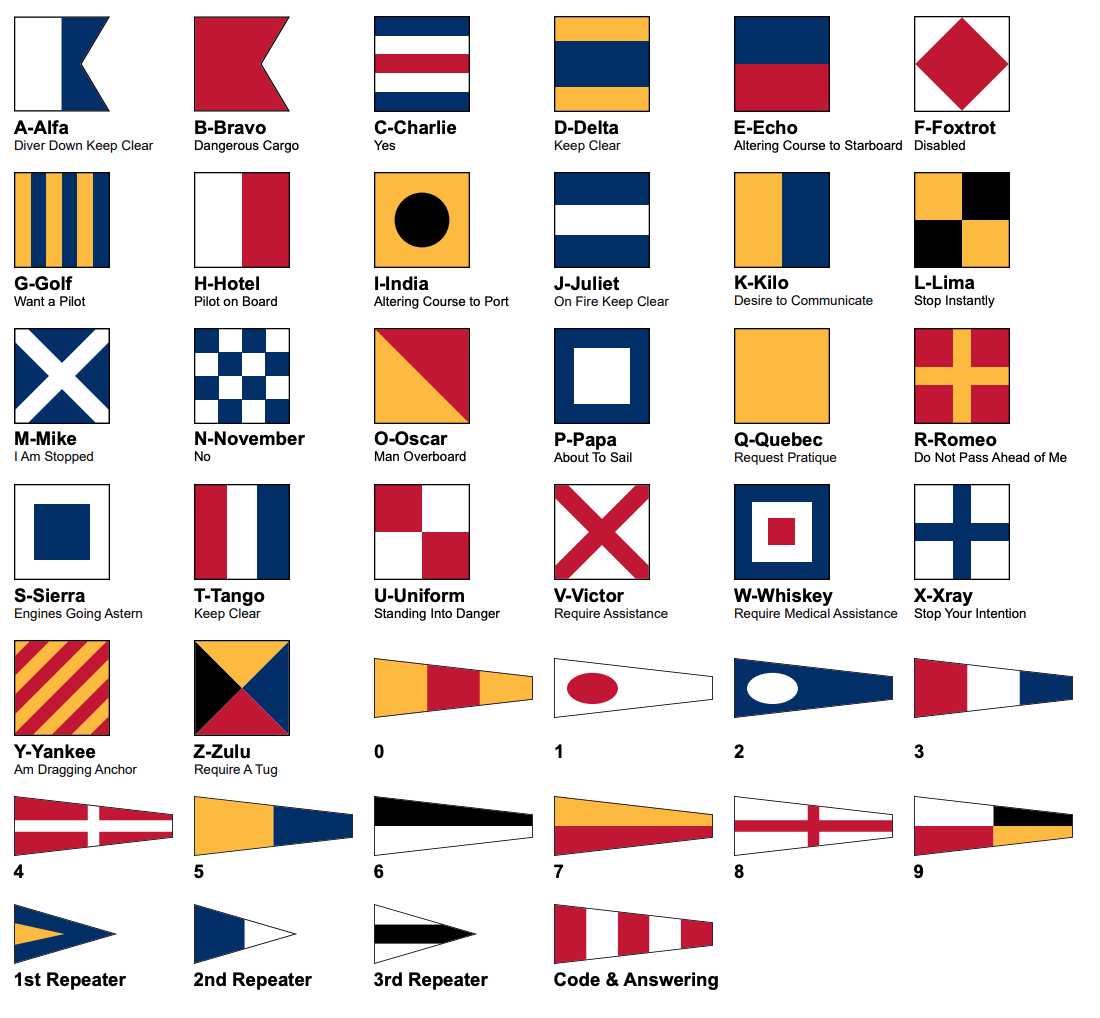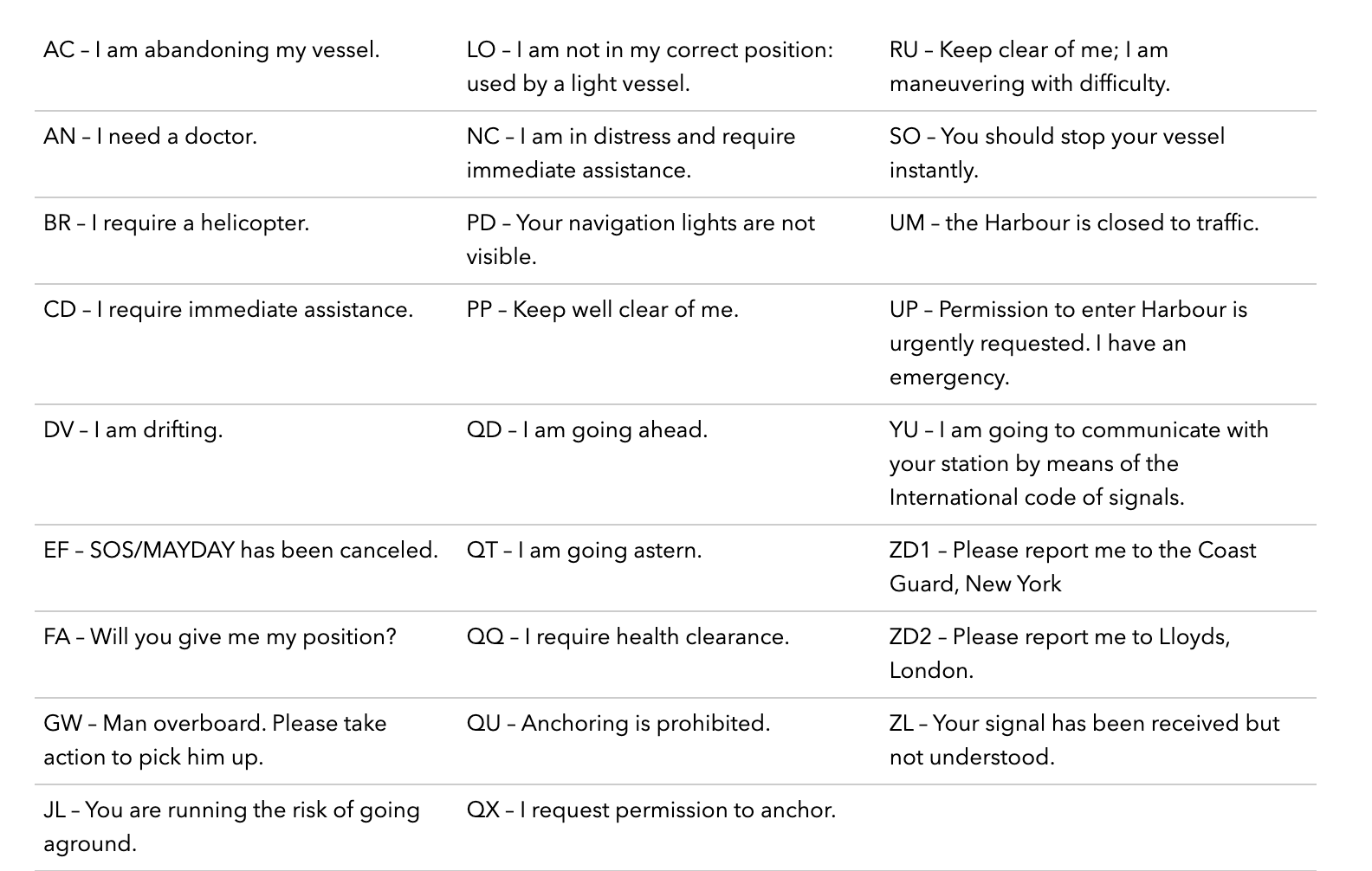A Guide to International Code Flags & Signals
Posted by Hayley Adams on Mar 23rd 2023
International code flags are used to signal between two ships or between ship and shore. Also called signaling flags, they are a set of ship flags of different colors, shapes, and markings which can be used individually or in combination to create different meanings. There are a total of 26 alphabetical flags, 10 numeral pennants, 3 substitutes, and the answering pennant.
Although the average person may never see them displayed except at fleet parades, around naval installations, or maybe in areas with heavy international shipping traffic, International Code Flags are a very crucial part of communication in the boating world.
But how do they work and what do they mean? Here is some insight of the different signal flags and an understanding to why they are important to use while operating any sea vessel.
The Beginning
Nautical flags were originally used in ancient military encounters where flags signaled other fleet members to take specific actions. Early flag communications were limited though; centuries before radios and sonar, they were the only way to communicate, instigate or investigate passing or oncoming vessels. You can only imagine the difficulties vessels had with that kind of limited communication at the time.
Even when radios were introduced to the scene, ships still ran into issues with language barriers when dealing internationally. As with any language barrier, there was still a need to develop an in depth code that would work within International waters between foreign governments and vessels. Hence, the International Code Signals (ICS) were introduced.
Alphabet Signal Flags
As we discussed, part of the ICS includes 26 alphabetical flags. You can use them individually or use multiple flags at a time to spell something out. Here is a break down of what each letter stands for.
- A: Alpha – Diver down; keep clear
- B: Bravo – Carrying dangerous cargo
- C: Charlie – Yes
- D: Delta – Keep clear, I am maneuvering with difficulty
- E: Echo – Altering course to starboard
- F: Foxtrot – I am disabled
- G: Golf – I want a pilot
- H: Hotel – A pilot on board
- I: India – I am altering course to port
- J: Juliet – Vessel on fire keep clear
- K: Kilo – I want to communicate with you
- L: Lima – Stop your vessel instantly
- M: Mike – My vessel is stopped
- N: November – No
- O: Oscar – Man overboard
- P: Papa – Vessel is about to sail
- Q: Quebec – I request free pratique
- R: Romeo – Reverse course
- S: Sierra – Engines are going astern
- T: Tango – Keep clear, I am engaged in pair trawling
- U: Uniform – You are heading into danger
- V: Victor – Require assistance
- W: Whiskey – Require medical assistance
- X: X-ray – Stop your intention
- Y: Yankee – Dragging anchor
- Z: Zulu – I require a tug

Additional Signals
Often times you will see more than one signal flag at at time. This can be a mix of Alphabetical flags as well as Numerical Pennants. Here is a break down of using more than 1 flag.
- Two-flag signals are used mostly for distress and maneuvering.
- Three-flag signals are for points of the compass, relative bearings, standard times, verbs, punctuation and also general code and decode signals.
- Four-flags are used for geographical signals, names of ships, bearings, etc.
- Five-flag signals are used to relate time and position.
- Six-flag signals are used to indicate north or south or east or west in latitude and longitude signals.
- Seven-flags are for longitude signals containing more than one hundred degrees.
Below are some examples of what multiple flag signals can look like and the meaning of them.

The Use of Code Flags Today
While modern technology has made communication from vessel to vessel or vessel to shore much easier and has decreased the necessity of using code flags today, it’s still crucial for boaters and operators to understand the ICS in case of emergencies.

